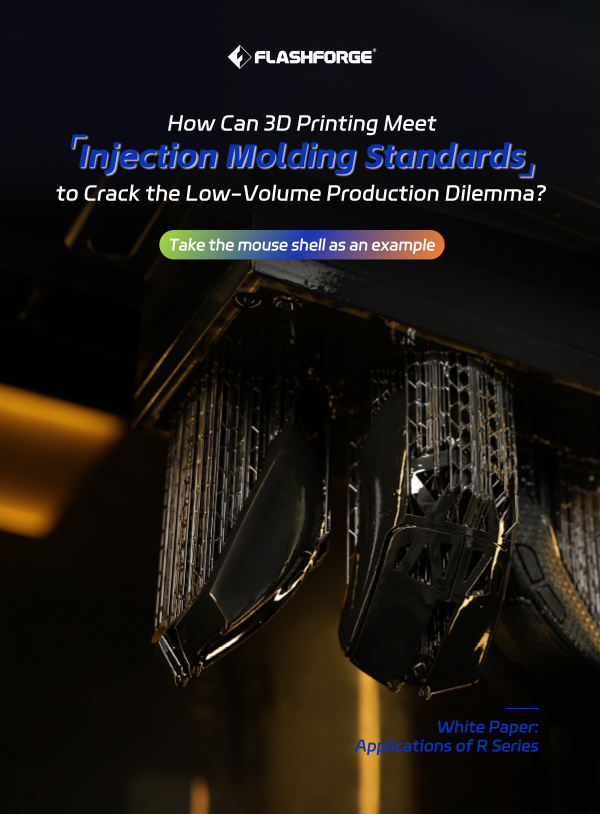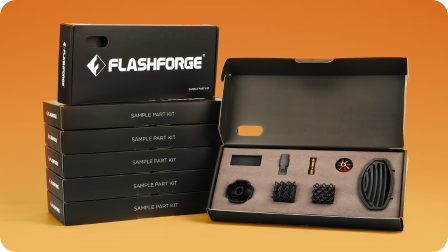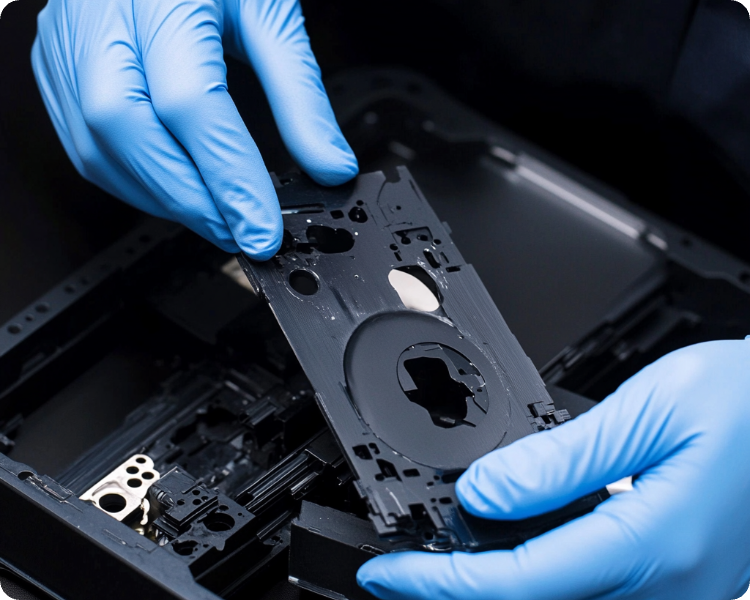
How Can 3D Printing Meet Injection Molding Standards to Crack the Low-Volume Production Dilemma?
Compared to traditional injection molding, 3D printing for plastic parts has evolved into a diverse landscape of technologies, including DLP, SLS, SLA, and MJF. This white paper series focuses on Flashforge's R Series powered by PReS technology, examining production scenarios where different technologies are applied to individual components. By systematically comparing key metrics like precision, cost, and efficiency in end-use applications, we aim to move beyond the perception of competing technologies and explore a new paradigm of intelligent manufacturing through multi-technology collaboration.
This paper takes the mouse shell, a high-precision, high-complexity end-use product, as its case study. By integrating enterprise-level production data, international certification testing reports, and dynamic cost models, it systematically addresses three core questions:
·Technical Feasibility:
Can the R Series 3D printers achieve injection-molding-grade precision and surface finish?
·Economic Baseline:
What is the break-even point for small-batch orders, and how is the equipment payback period calculated?
·Scaling Thresholds:
At what order volume does traditional injection molding become more economical than 3D printing, and how is the tipping point for a hybrid production model defined?
As industry rules are reshaped by technological disruption, those who merely observe will fall to the end of the value chain, while those who act will shape the next generation of manufacturing standards.
This white paper is dedicated to providing you with a complete roadmap, from technical understanding to commercial implementation. What you need is not just equipment, but a predictable, growing market.
*Please fill in your information to obtain the full version of the white paper!

SUBSCRIBE TO US
Be the first to receive our latest updates
Copyright© 2012-2025 Flashforge All Rights Reserved.
Copyright of Flash Casting Group浙ICP备19026245号-1


























